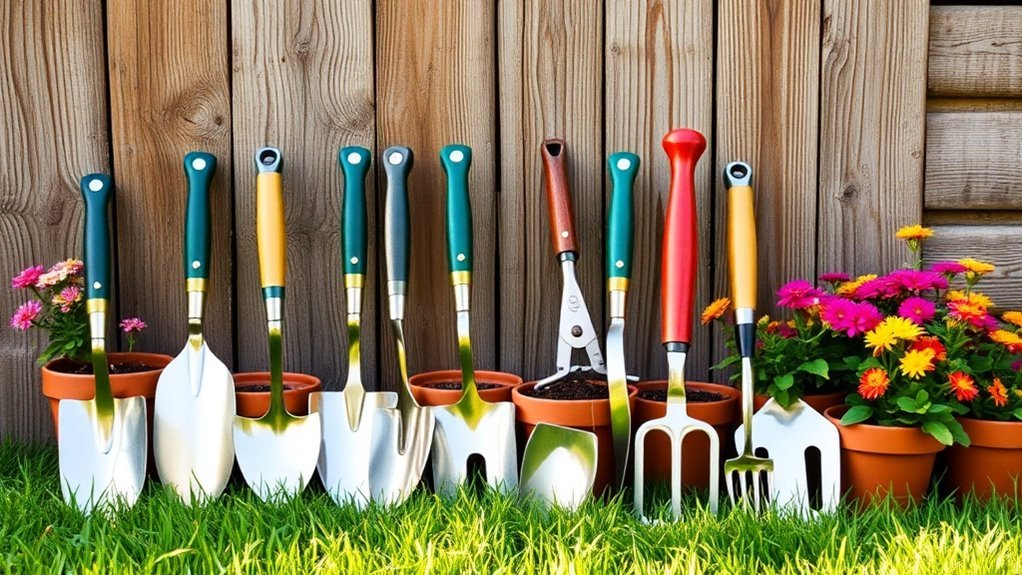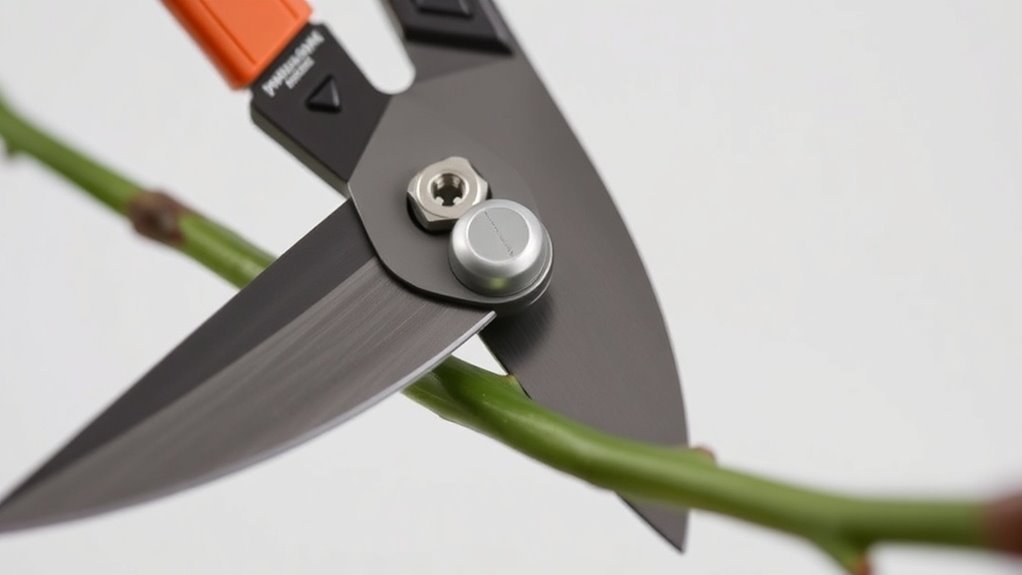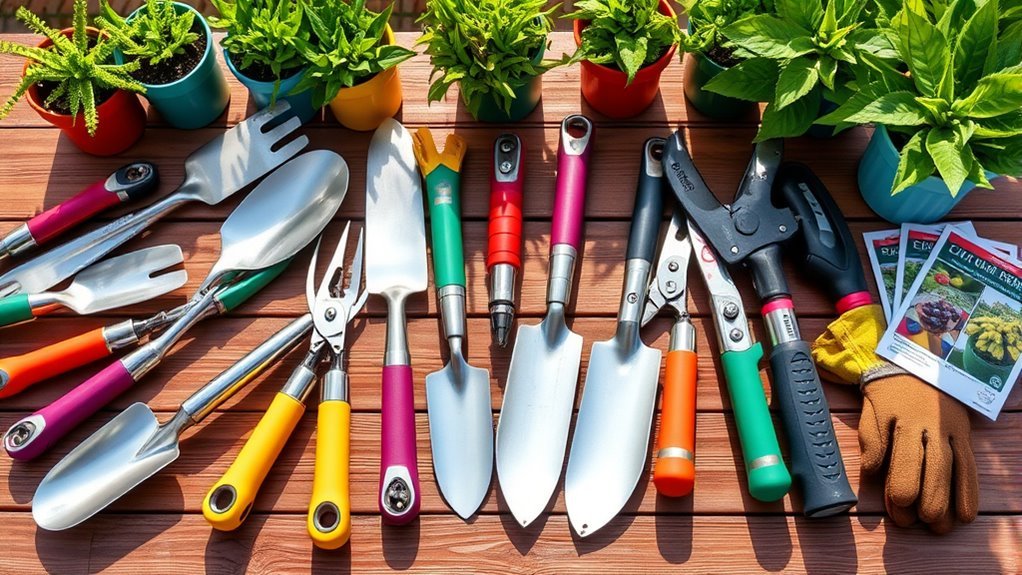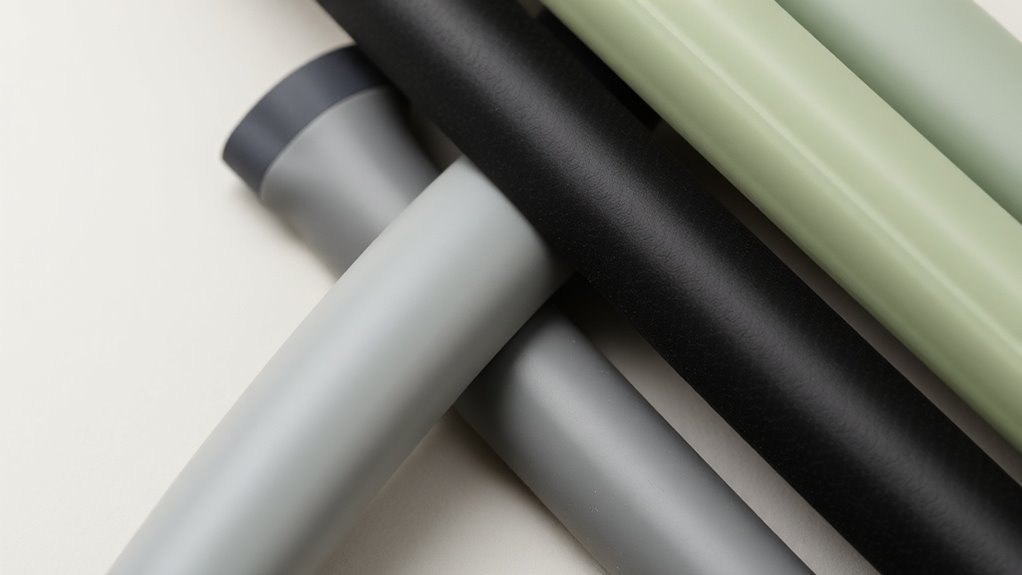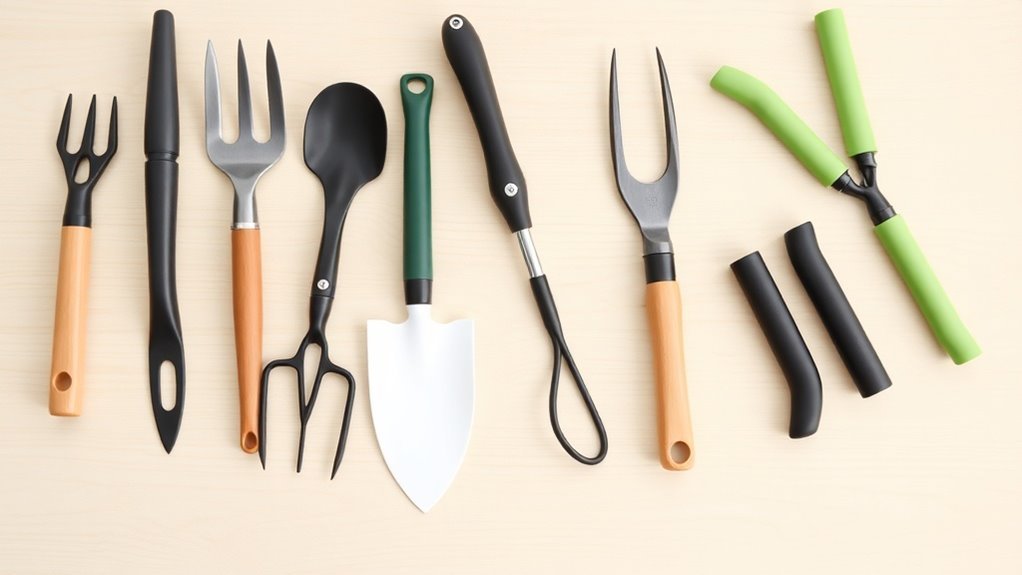How to Choose Tools Based on Terrain & Climate

When choosing tools based on terrain and climate, first consider the ground type. Rocky areas need sturdy, durable tools, while sandy soils require equipment designed to prevent sinking. In muddy conditions, opt for tools with excellent grip. Weather is essential too; rain calls for tools with better traction, and extreme temperatures might require rust-resistant gear. Ensuring proper maintenance enhances tool longevity and performance. There’s much more to explore on how specifics affect your tool selection.
Key Takeaways
- Assess the terrain type; choose sturdy tools for rocky landscapes, compact for dense forests, and lightweight for flat, open areas.
- Consider weather conditions; select tools with better grips for slippery surfaces and durable materials for extreme temperatures.
- Ensure tools have rust-proof features and are made of high-quality materials to withstand environmental wear and tear.
- Prioritize ergonomic designs and textures that enhance grip to reduce fatigue and prevent slips in muddy or wet conditions.
- Regularly maintain gear and check temperature ratings to ensure optimal performance and reliability across various environments.
Understanding Different Terrains
When it comes to outdoor activities, the terrain you’re facing can greatly influence the tools you’ll need. For rocky terrains, you’ll want sturdy tools that can withstand rough usage, while softer areas might require lighter, more portable options.
If you’re trekking through dense forests, a compact saw or durable machete could be invaluable. Conversely, on flat, open land, long-handled tools or gardening equipment might be sufficient.
In muddy or wet conditions, consider gear with better traction and drainage. Each terrain type presents unique challenges; understanding them helps you choose the right tools. Essential cutting tools can enhance your outdoor experience by providing reliability and versatility across various landscapes.
Selecting gear with optimal traction and drainage is essential for navigating the unique challenges of muddy or wet terrains.
Assess your surroundings before heading out, as it’ll not only enhance your efficiency but also guarantee safety during your adventure. Remember, using the right tools can make all the difference.
The Impact of Weather Conditions
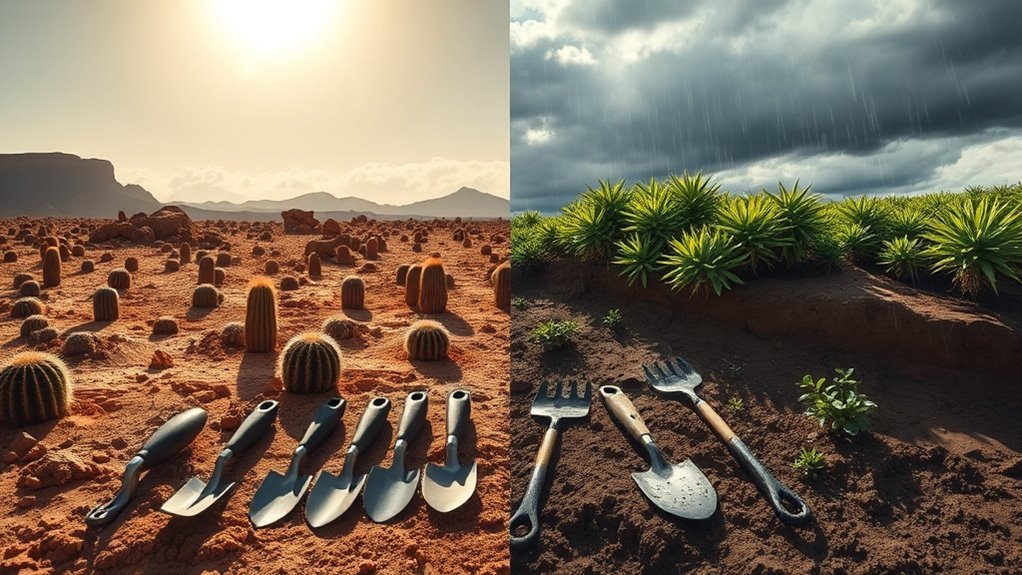
Though weather conditions can change rapidly, understanding their impact on your outdoor activities is essential. They can influence not just your comfort but also your safety and the effectiveness of your tools.
For instance, rain can make the ground slippery, requiring tools with better grip, while high winds may affect the performance of lightweight equipment. Extreme temperatures can also alter how materials react, so you’ll want gear that can withstand the heat or cold without failing.
Additionally, planning for sudden weather changes can mean the difference between a successful outing and a frustrating experience. Always check the forecast and consider the environment when choosing your tools—you’ll enhance both your performance and enjoyment in any terrain or climate.
Essential Tools for Rocky Landscapes
Traversing rocky landscapes can be challenging, so having the right tools on hand is essential for your success and safety.
Start with a sturdy pair of hiking boots, offering good traction and ankle support. A dependable backpack that can hold all your gear helps keep your hands free. For steering through uneven terrain, a trekking pole is invaluable, providing stability and reducing strain on your legs.
Don’t forget a multi-tool or rugged knife; it’ll come in handy for various tasks. If you’re planning to climb, invest in a proper climbing harness, ropes, and carabiners.
Finally, a reliable first aid kit guarantees you’re prepared for unexpected injuries, especially if it includes essential first-aid tools that address common outdoor injuries. With these essential tools, you’ll tackle rocky environments with greater confidence and ease.
Choosing Equipment for Sandy Soils
When you’re working in sandy soils, you’ll want to think about how durable your equipment is and how well it can handle the conditions. A proper tread design can make all the difference in preventing your tools from sinking or becoming bogged down. Additionally, impact drivers are particularly useful for driving screws into tough materials, ensuring you can maintain efficiency in sandy conditions. Let’s explore what features to prioritize to guarantee your gear performs effectively.
Equipment Durability Considerations
Since sandy soils can pose unique challenges, it’s vital to choose equipment that can withstand their abrasive nature. Look for tools made from high-quality materials like stainless steel or specialized alloys. These can resist wear and tear better than standard options.
Seals and bearings should be heavy-duty to prevent sand from entering and causing damage. Additionally, consider the design of moving parts; they should minimize contact with sand, which can lead to quicker degradation.
Regular maintenance will be essential to keep your equipment in top shape, so think about how easy it’s to clean or service your tools. Durability doesn’t only save you money but also improves efficiency during your work in sandy conditions.
Optimal Tread Design
To effectively navigate sandy soils, selecting equipment with perfect tread design is essential.
You’ll want tires that have a wider footprint to distribute weight and minimize sinking. Deep treads can help with traction, but too deep may lead to digging in instead of rolling over the surface.
Look for patterns designed to channel sand away, reducing the risk of clogging. Smooth, rounded tread edges can also help keep equipment from getting stuck.
Additionally, consider tires specifically rated for sand use, as they often offer better performance in these conditions.
Always check the tire pressure; properly inflated tires help maintain peak grip.
Navigating Muddy Environments
When you’re tackling muddy environments, you need to think about how well your tools grip and what materials they’re made of.
A good grip can prevent slips, while durable materials will withstand the challenging conditions. Additionally, the choice of high-carbon steel for the construction of your tools can significantly enhance their durability and performance in such environments.
Let’s explore these key factors to make sure you’re equipped for the task ahead.
Tool Grip Considerations
Although muddy environments can pose challenges, choosing the right tool grip can make all the difference in maintaining control and comfort.
For wet conditions, opt for grips made of textured or rubber materials that enhance traction. A contoured grip can also be helpful, as it fits your hand better and reduces slippage.
Ensure your tools have an ergonomic design, as this can prevent hand fatigue during extended use.
It’s good to test how the grip feels while your hands might be wet or muddy; a poor grip can lead to accidents. If possible, go for tools with adjustable grips to accommodate varying hand sizes and needs.
Ultimately, the right grip will enhance your handling, making your work more efficient and safer.
Material Durability Factors
Choosing tools with the right grip can enhance your efficiency in muddy conditions, but the materials used in those tools are equally important.
When you’re maneuvering through wet, muddy environments, opt for stainless steel or high-grade plastics that resist corrosion and deterioration. Avoid materials that can easily absorb water, as they’re likely to weaken over time and become less effective.
Rubberized grips provide a solid hold, but make certain the tool itself is designed to withstand muck without degrading. Consider weight, too; lighter materials can reduce fatigue, but they must still be strong enough to handle tough jobs.
Ultimately, durability should be your priority, keeping in mind the specific challenges that muddy terrain presents. Invest wisely, and your tools will serve you well.
Selecting Tools for Wet and Rainy Conditions
Since wet and rainy conditions can complicate outdoor projects, selecting the right tools becomes essential for maintaining efficiency and safety. Start by choosing tools that are resistant to rust and water damage, like stainless steel or plastic options. You’ll want tools with good grip to prevent slipping in wet conditions. Additionally, it’s important to apply protective coatings to help prevent rusting during storage.
Here’s a handy table to guide you:
| Tool Type | Recommended Features |
|---|---|
| Shovels | Non-slip handle, rust-proof |
| Rakes | Plastic or coated metal |
| Saws | Corrosion-resistant material |
| Hammers | Rubber grip, weatherproof |
| Gloves | Waterproof, good traction |
With the right tools, you can tackle your projects safely and effectively, even in the rain!
Preparing for Extreme Temperatures
When you’re facing extreme temperatures, whether sweltering heat or freezing cold, preparing properly is essential for your safety and the effectiveness of your tools.
First, always check the temperature ratings on your equipment. In hot conditions, look for tools that won’t warp or malfunction due to heat exposure. For freezing temperatures, opt for gear that can withstand severe cold without cracking or losing functionality.
Always verify your equipment’s temperature ratings to ensure optimal performance in extreme heat or severe cold.
Additionally, dress in layers and stay hydrated when it’s hot, while insulating yourself to combat the cold. Bring portable shade or heat sources as needed.
Finally, don’t forget about lubricants and batteries; they can perform differently in extremes, so choose ones designed for those conditions. Regular maintenance with fuse testers can also enhance the reliability of electrical tools you might be using in these temperatures.
Preparedness is key to avoiding breakdowns and ensuring smooth operation.
Questions
How Do I Maintain Tools for Harsh Environments?
To maintain tools for harsh environments, regularly clean them, lubricate moving parts, and inspect for damage. Store them properly to avoid rust and corrosion, and always replace worn-out parts to guarantee longevity and performance.
Are There Specific Brands Better Suited for Rugged Terrains?
When you’re maneuvering through rocky landscapes or muddy fields, brands like DeWalt and Makita excel. They balance resilience with performance, making them perfect for heavy-duty tasks. Just remember, investing in quality pays off in the long run.
Can I Use the Same Tools Across Different Climates?
Yes, you can use the same tools across different climates, but be mindful of material durability and functionality. Some tools may need adjustments or maintenance based on extreme conditions like moisture, heat, or cold.
What Safety Gear Should I Consider for Extreme Conditions?
In the iron grip of nature’s fury, you’ll need sturdy helmets, insulated gloves, and reinforced boots. Don’t forget goggles to shield your eyes, and layers to embrace changes—safety gear is your armor against the storm.
How Often Should I Replace Tools Exposed to Adverse Weather?
You should replace tools exposed to adverse weather every few years, depending on their condition. Regularly inspect for rust or damage, and if you notice significant wear, it’s time to invest in new ones.
Conclusion
As you gear up for your next adventure, remember that choosing the right tools can mean the difference between a smooth journey and a grueling struggle. Picture yourself maneuvering rocky cliffs with a trusty pick, or sinking into soft sands with the perfect shovel at your side. With the right preparation for any climate or terrain, you’ll feel the thrill of discovery instead of the dread of defeat. Do you have the tools to conquer the landscape waiting for you?

